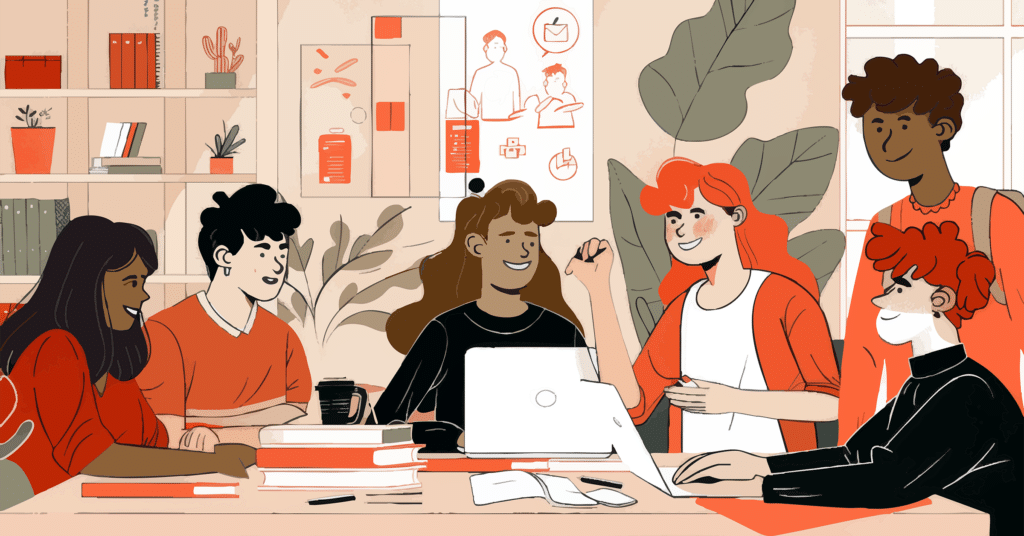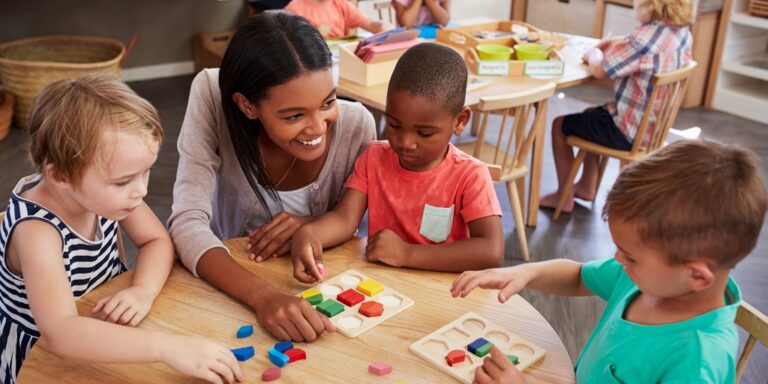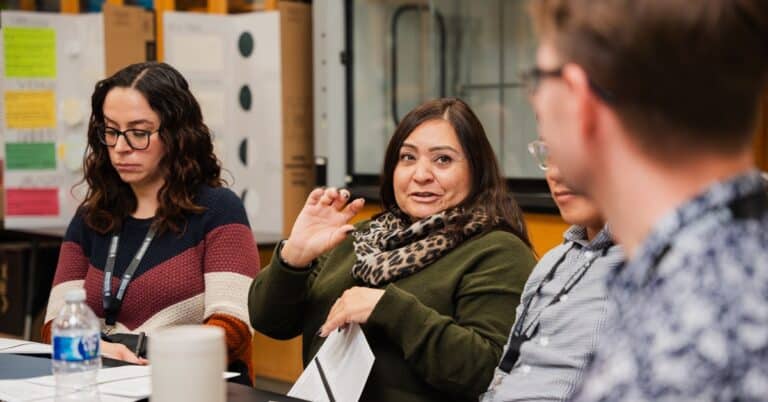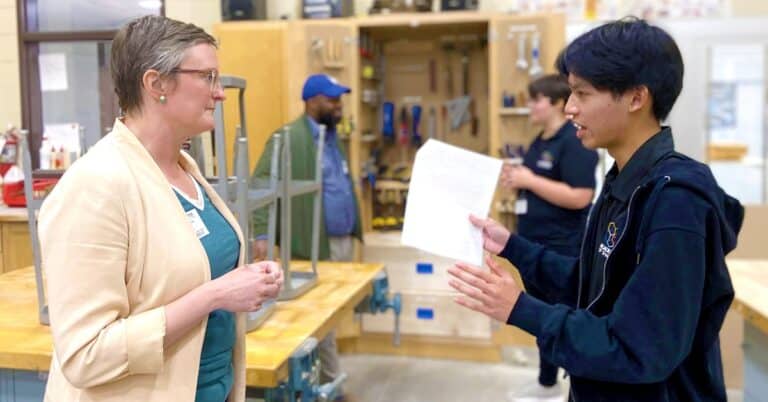Personalized, competency-based learning centers each students’ strengths, needs and interests and provides differentiated supports and ways to demonstrate what they know and know how to do, ensuring each learner graduates ready for what’s next.

The core elements of a personalized, competency-based learning environment are:
- Learner Agency
- Timely, Actionable Assessments
- Customized Learner Supports
- Progression upon Mastery
- Flexible Learning Paths
- Strategies and Systems Ensure Equity
- Rigorous Academic and Social-Emotional Learning Targets
Source: Adapted from Aurora Institute
Why is personalized, competency-based learning important for today’s students?
Personalized, competency-based learning emphasizes creating engaging educational experiences that are customized to each learner’s strengths, needs and interests. Students have voice and ownership over how, what, when and where they learn and connections to community and real-world experiences are a priority. KnowledgeWorks partners with learning communities across the country to sustainably implement this approach to teaching and learning.
What role does the teacher play in a personalized, competency-based classroom?
Relationships drive student learning. Teachers are essential in creating unique opportunities for learning by working with students to create a classroom culture where students can discover their learning needs and work side-by-side with learners throughout the year.
What is the role of technology in personalized learning?
Technology enables learning – but it isn’t central to how we meet students’ needs. Technology is a tool. While it can be used to support student activities, it can’t replace the critical role of the relationship between a student and a teacher. By providing engaging instruction, just-in-time supports and key real-world learning opportunities, technology supports teachers in their efforts to meet each student where they are.
What is the role of state standards in a personalized, competency-based learning environment?
Standards guarantee every student an equal, quality education. In states committed to scaling personalized, competency-based learning, standards are about consistency. They’re aligned to competencies that allow students to demonstrate what they know and know how to do – ensuring high quality, meaningful learning experiences for all students.
How is personalized, competency-based education integrated into career-based learning pathways?
Students connect their learning with life beyond the classroom. Certifications through career and technical education (CTE) opportunities are great examples of how school districts can implement personalized, competency-based learning for career readiness. Students participating in certification programs, such as Certified Nursing Assistant programs or welding programs, are required to show competency in several areas before they are certified in their field. CTE programs build upon earlier learning in the classroom and ensure learning is relevant and transferable for students in ways that directly benefit their career trajectory.
What does it mean for students to work at their own pace?
Students move ahead when they have demonstrated mastery of content, not when they’ve reached a certain point in the school year. In a personalized, competency-based learning environment, pace is set by the teacher based on where each student excels and requires support. Students understand how what they’re working on contributes to their understanding of the learning targets, and what they need to do to demonstrate mastery and at what level of rigor. A student-centered learning approach gives teachers a greater understanding of when supports may be needed to advance deeper learning.
How will a teacher personalize learning for every single student?
A learner-centered classroom doesn’t mean 25-30 individual lesson plans. It’s about developing a student’s agency, so they have a voice in their education, choice in how they learn and engagement opportunities to access content in the best way for them. The school day includes instructional time with the teacher and opportunities to work independently, in pairs or with other students. Because learning targets are transparent, students work with the teacher to determine what they need to accomplish to meet their learning goals and how they can show evidence of that learning. Expectations are not a mystery, and students have a greater understanding of what they need to learn and why.
Are students tracked in a personalized, competency-based learning environment?
Tracking – the widespread practice of labeling, ranking, sorting and separating students by perceived academic ability and behavioral compliance – limits what learners have access to and can achieve. Once tracked, students typically receive very different expectations, messages, learning conditions, curricula and opportunities. Over time, these differences open more doors for some while slamming them shut for others. In a personalized, competency-based learning environment, students learn actively using different pathways and varied pacing that does not result in tracking or other forms of ability grouping. Each core element of personalized, competency-based education – engaging experiences, a focus on the learner’s individual needs and assets, student agency, connections to real-world experiences and preparation – have substantial evidence supporting their efficacy in closing opportunity gaps and producing more equitable outcomes.




